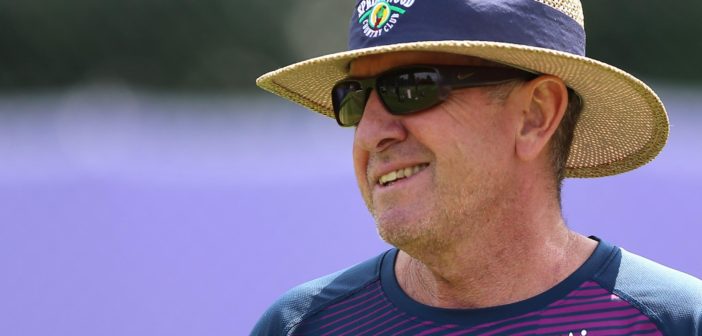Trevor Bayliss has two matches left as England coach. How he is remembered may depend on the outcome of those two games. He may leave with England holders of the World Cup and the Ashes.
Or he may leave as someone whose sides did well in one-day cricket, a metamorphosis started under Farbrace and Morgan, but who oversaw a decline in the test team, particularly in its batting.
But one thing he has begotten to England cricket is the notion “better to give a player one test too many than one too few.” This has fed through into stagnant selections with players with fairly ordinary first-class careers, which suggest they were a touch fortunate to get selected in the first place, being retained for longer than wise.
England will go into the next test with the same batsmen who were bowled out for 67 in the last one. This was no blip – Bayliss’ England have been bowled out for double figures in four of their past 19 tests. Meanwhile, Ollie Pope, a rare batting talent who averages more in first-class cricket than Steve Smith, is left on the sidelines. (Pope is one for whom the ‘one test too many’ theory did not apply for he was dropped after two games. )
There are several batsmen who have shown no obvious signs that they will score copious amounts of test runs over time but who get retained under the ’one test too many than one too few’ principle which translates, in reality, to several tests too many.
Bayliss believes players take time to succeed in test cricket, so you must avoid hasty judgments. A bit of cursory statistical analysis and this contention looks highly dubious at best, plain wrong at worst.
Take the five most recent batsmen to have been picked and discarded who have made it into double figures for test caps – Hales and Stoneman (11 caps), Vince (13), Malan (15) and Jennings (17). What if their careers had been cut off prematurely, so they had only played half the tests they did? Well, their averages would be much the same in the case of Hales (28.72 compared with 27.28 at halfway) and Jennings (24 versus 25.19); worse for Vince (19.27 to 24.90) but better in the cases of Malan (35.07 to 27.84) and Stoneman (31 against 27.68).
These extra games did not reveal much about the players’ run-scoring actuality that had not already been shown. If anything, batsmen get less productive the more games they play, the more opposition bowlers and analysts got to know about them.
Those who have remained in the side also have a more impressive record over the first half of their carers than the second part. Root, Bairstow, Woakes and Moeen Ali all average significantly less now than half a test-career ago; Stokes and Buttler average essentially the same.
Buttler was brought back from the red-ball wilderness and into the test side. When he was recalled his test record stood at 18 caps and an average of 31.36; it now stands at 34 caps and an average of 32.90. In other words, Buttler’s real worth to the side as run-scorer was established long ago.
As a rough guide, if a player averages 50 he is world-class; 40 and he is test-class. The last six men to average in the 40s for England are Root, Cook, Trott, Bell, Pietersen and Strauss. All established their run-scoring ability early in their test careers.
All have a second-half test career less productive than their first half. After eight tests (a semi-random figure chosen as it’s half the number of tests Malan and Jennings have had) three of this half dozen had test averages in the 50s; the other three were in the 40s, the lowest of which was Bell’s 42.54.
Bayliss’ notion is that if you kiss the same frog often enough it may turn into a prince. Recent reality suggests that, however long you snog it, however many candle-lit dinners you buy it, it will still be a frog.
![Prost International [PINT]](https://prostinternational.com/wp-content/uploads/2021/08/PINTtFontLogoRoboto1536x78.jpg)



